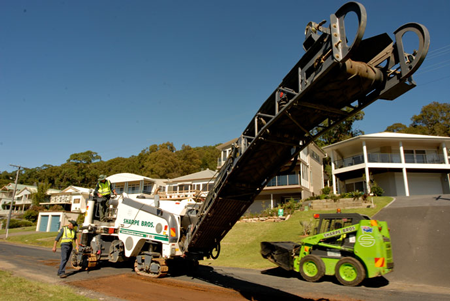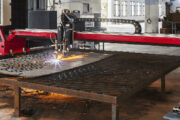The process of pavement profiling is used all over Australia. The roads and highways can be damaged very quickly because of the increased traffic and the weight of the vehicles on the roads. Furthermore, the government and the road construction engineers are facing additional problems because of the increased material and labour costs. All these factors make the entire process of road construction and road maintenance very difficult. Luckily, the process of pavement profiling gives the road construction engineers another option which can help them a lot in minimizing the costs for the pavement rehabilitation. The procedure of pavement profiling minimizes the thickness of the new overlay on the road.

The process of pavement profiling is described as automatic controlled cold milling process on pavement surfaces by using various profiling machines such as road profiler, asphalt profiler, pavement profiler and other models of road profilers. These machines are powerful and capable to restore the surface on the roads to a specified slope and grade, to remove ruts and bumps, and to remove other road imperfections. As a result, a textured surface is being created which provides an improved bond for the next overlay.
Machine Design And Action. All road profilers, like the pavement profiler or the asphalt profiler, generally come with a machine steel made body which is mounted on tracks or tires. A hydraulic system enables the entire body to slide either up or down. One steel made cutting drum is attached under the frame of the road profiler, and this drum is rotated by using a hydraulic or belt drive system. The road profilers are usually powered by a diesel engines. The functions of the asphalt profiler are being controlled by electrical or hydraulic sensors. The sensors transfer the hydraulic fluid into the hydraulic legs. This way the road profilers slide up and down. The drum of the pavement profiler rotates in anti-clock direction and creates a cutting action as it moves into the face of the material that needs to be cut out. The material that has been cut out is thrown on a conveyor belt and loaded into a dump trucks.
The performance of the road profilers depends greatly on the total weight of the machine, horsepower, cutting depth and cutting width. Large-sized road profilers with extra weight and horsepower can cut greater depths and widths when compared with small-sized road profilers with smaller horsepower range. The cutting depths range from 10 – 300 mm, while the cutting widths range from 200 – 2000 mm. Both the width and the depth can be increased by performing several passes on the surface.
Work Site Procedure. A test hole in the asphalt is required before starting the profiling action. With this procedure, the engineers can determine easily the depth of the asphalt, and which road profiler to be used for performing certain profiling action. Without test holes, wrong decisions can be easily made which can affect the entire profiling project, resulting in increased costs for extra repairs.
Once the depth of the asphalt is being determined, a suitable pavement profiler needs to be selected. If too small road profiler is being selected, extra costs are included in the project, because multiple passes are required; there is a need for traffic control, increased asphalt crew waiting time, etc. On the other hand, if big and heavy road profilers are being used, the costs are also big because extra labour is required for the entire operation.


